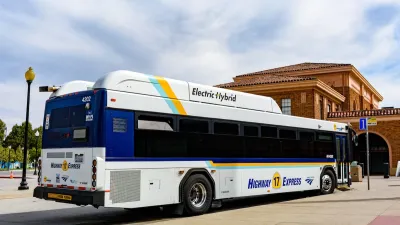By looking closely at the key factors that helped London's congestion charge succeed, other cities can decipher whether a similar scheme would work in their jurisdictions.
"One of the most notable legacies of the just defeated mayor of London, Ken Livingstone, is London's traffic congestion charge. The first such scheme to be implemented by a major European city, it was introduced in 2003 and led to a 30 per cent drop in congestion levels practically overnight. Not surprisingly, it quickly gained broad popular support.
Canada's major cities should take six lessons from both the surprising political success of this scheme at the outset and the degree to which this success has faded over time.
One, the original congestion charge introduced in February 2003 penalized only a small proportion of people travelling into London, since more than 90 per cent already relied on public transit. The charge targeted congestion arising from commuters travelling into and out of the downtown core. Cars were charged £5 per day for travelling into a small central London zone that covered little more than the financial and theatre districts. Residents of the zone got a 90 per cent discount and taxis were exempt."
FULL STORY: Lessons for big cities from London's congestion charge

Americans May Be Stuck — But Why?
Americans are moving a lot less than they once did, and that is a problem. While Yoni Applebaum, in his highly-publicized article Stuck, gets the reasons badly wrong, it's still important to ask: why are we moving so much less than before?

Using Old Oil and Gas Wells for Green Energy Storage
Penn State researchers have found that repurposing abandoned oil and gas wells for geothermal-assisted compressed-air energy storage can boost efficiency, reduce environmental risks, and support clean energy and job transitions.

Placekeeping: Setting a New Precedent for City Planners
How a preservation-based approach to redevelopment and urban design can prevent displacement and honor legacy communities.

San Francisco’s Muni Ridership Grew in 2024
The system saw its highest ridership since before the Covid-19 pandemic, but faces a severe budget shortage in the coming year.

Colorado Lawmakers Move to Protect BRT Funding
In the face of potential federal funding cuts, CDOT leaders reasserted their commitment to planned bus rapid transit projects.

Safe Streets Funding in Jeopardy
The Trump administration is specifically targeting bike infrastructure and other road safety projects in its funding cuts.
Urban Design for Planners 1: Software Tools
This six-course series explores essential urban design concepts using open source software and equips planners with the tools they need to participate fully in the urban design process.
Planning for Universal Design
Learn the tools for implementing Universal Design in planning regulations.
Heyer Gruel & Associates PA
City of Moreno Valley
Institute for Housing and Urban Development Studies (IHS)
City of Grandview
Harvard GSD Executive Education
Salt Lake City
NYU Wagner Graduate School of Public Service
City of Cambridge, Maryland





























